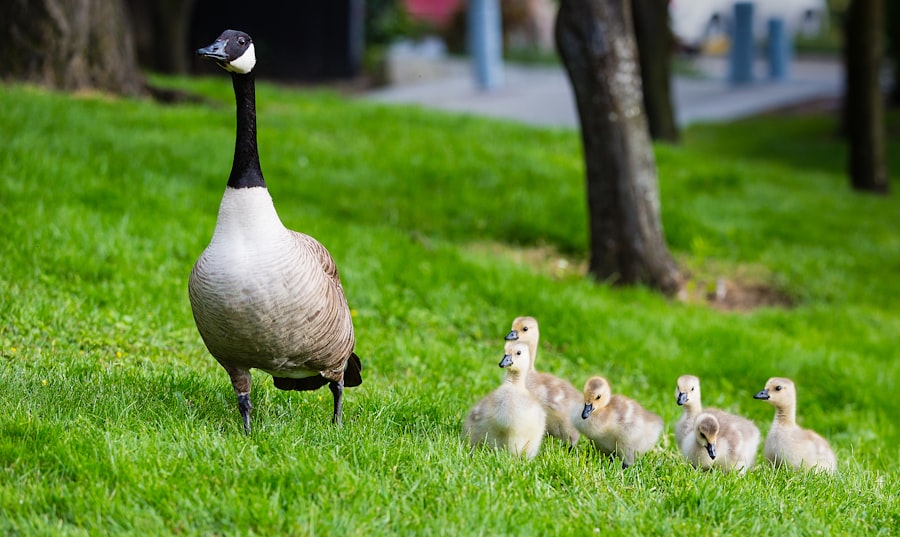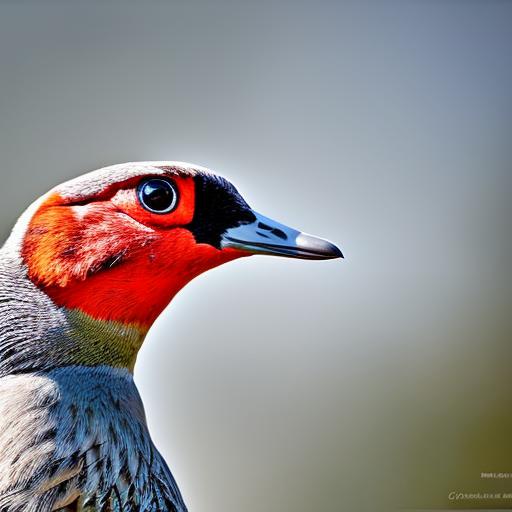Geese invading properties and causing damage is a common problem that many property owners face. These birds can be a nuisance, leaving behind droppings, damaging lawns, and even posing a threat to human safety. In an effort to deter geese from their properties, many people have turned to using mothballs as a repellent. This blog post aims to explore the effectiveness of using mothballs for goose control and provide a balanced perspective on the topic.
Key Takeaways
- Mothballs are commonly used to deter geese from certain areas.
- The strong odor of mothballs is what repels geese.
- Mothballs can be effective in keeping geese away, but may not work in all situations.
- Pros of using mothballs include affordability and ease of use, while cons include potential harm to the environment and other animals.
- Safety precautions when using mothballs around geese include wearing gloves and avoiding direct contact with the skin.
How mothballs work as a goose repellent
Mothballs are small balls made of naphthalene or paradichlorobenzene, chemicals that have a strong odor. This odor is what repels geese and other animals. When exposed to the air, the chemicals in mothballs vaporize and release a pungent smell that is unpleasant to geese. The strong odor overwhelms their senses and drives them away from the area.
Mothballs are not only effective in repelling geese but also other animals. The strong smell can deter rodents, insects, and even some larger animals like raccoons or squirrels. This makes mothballs a versatile option for those looking to keep various pests away from their properties.
The effectiveness of mothballs in keeping geese away
Many people have reported success in using mothballs to deter geese from their properties. Personal experiences and anecdotes often highlight how geese would avoid areas where mothballs were placed. Additionally, there have been studies and research conducted that support the effectiveness of mothballs as a goose repellent.
However, it is important to note that the effectiveness of mothballs may vary depending on various factors such as weather conditions and location. Heavy rain or wind can reduce the potency of the odor, making it less effective in repelling geese. Additionally, the location of the mothballs plays a crucial role in their effectiveness. Placing them strategically near areas where geese frequent, such as ponds or lawns, can yield better results.
The pros and cons of using mothballs for goose control
Using mothballs for goose control has its advantages and disadvantages. One of the main advantages is affordability. Mothballs are relatively inexpensive and can be easily purchased at most stores. They are also easy to use, requiring minimal effort to place them in the desired areas.
However, there are also disadvantages to using mothballs. One major concern is the potential harm they can cause to the environment and other animals. Mothballs contain chemicals that can be toxic if ingested or inhaled. This poses a risk not only to geese but also to other wildlife that may come into contact with the mothballs.
It is important to consider these pros and cons when deciding whether or not to use mothballs for goose control. It is crucial to weigh the potential benefits against the potential risks and make an informed decision.
Safety precautions when using mothballs around geese
When using mothballs around geese, it is important to follow safety guidelines to minimize any potential risks. Firstly, it is essential to handle mothballs with care and avoid direct contact with the skin. It is recommended to wear gloves when handling them.
Mothballs should also be stored in a secure location away from children and pets. Ingesting or inhaling mothballs can be harmful, so it is crucial to keep them out of reach.
There is also a risk of geese ingesting or inhaling mothballs if they are placed too close to areas where they feed or rest. It is important to consider this when deciding where to place the mothballs.
Alternative methods for goose control

While using mothballs can be effective in deterring geese, there are also alternative methods that can be explored. Decoys, such as fake predators or swans, can be used to scare geese away. Sound devices that emit loud noises or distress calls can also be effective in repelling geese.
Comparing and contrasting these alternative methods with using mothballs can help property owners determine which option is best suited for their specific situation. It is important to consider factors such as cost, effectiveness, and practicality when choosing a method for goose control.
How to properly use mothballs for maximum effectiveness
To maximize the effectiveness of mothballs for goose control, it is important to follow proper usage guidelines. Firstly, it is recommended to place the mothballs strategically near areas where geese frequent, such as ponds or lawns. This will increase the chances of the geese encountering the strong odor and being deterred.
It is also important to regularly replace the mothballs as their odor diminishes over time. This will ensure that the repellent effect remains strong and consistent.
Additionally, personal tips or tricks from experienced users can be helpful in maximizing the effectiveness of mothballs. These may include placing mothballs in mesh bags or containers to prevent them from being easily moved or blown away by wind.
The impact of mothballs on the environment
While mothballs can be effective in deterring geese, it is important to consider their impact on the environment. Mothballs contain chemicals that can be harmful to the environment and other animals if not properly disposed of.
When disposing of used mothballs, it is recommended to follow proper disposal methods. This may include contacting local waste management authorities for guidance on how to safely dispose of them.
It is also important to be mindful of the potential harm that mothballs can cause to other animals. Placing them in areas where other wildlife may come into contact with them should be avoided.
Common misconceptions about using mothballs for goose control
There are several common misconceptions about using mothballs for goose control that need to be addressed. One common myth is that mothballs can be used as a direct repellent by placing them on the ground. However, this is not effective as the odor needs to be released into the air to deter geese.
Another misconception is that mothballs can be used as a long-term solution for goose control. While they can be effective in the short term, their effectiveness may diminish over time as the odor dissipates.
It is important for readers to do their own research and gather factual information to make informed decisions about using mothballs for goose control.
Is using mothballs a viable option for deterring geese?
In conclusion, using mothballs can be a viable option for deterring geese from properties. They have been reported to be effective in repelling geese and other animals, and there are studies and research that support their effectiveness.
However, it is important to consider the pros and cons of using mothballs and weigh them against other alternative methods for goose control. Safety precautions should also be followed when using mothballs around geese to minimize any potential risks.
Ultimately, property owners should make an informed decision based on their specific situation and needs. It is encouraged for readers to share their own experiences or opinions on using mothballs for goose control to further contribute to the discussion.
If you’re looking for effective ways to keep geese away, you may have come across the suggestion of using mothballs. While this method is commonly mentioned, it’s important to understand its effectiveness and potential drawbacks. In a related article on Poultry Wizard, you can learn more about whether mothballs truly keep geese away and if there are any alternative methods that may be more suitable. Check out the article here to gain a better understanding of this topic.
Meet Walter, the feathered-friend fanatic of Florida! Nestled in the sunshine state, Walter struts through life with his feathered companions, clucking his way to happiness. With a coop that’s fancier than a five-star hotel, he’s the Don Juan of the chicken world. When he’s not teaching his hens to do the cha-cha, you’ll find him in a heated debate with his prized rooster, Sir Clucks-a-Lot. Walter’s poultry passion is no yolk; he’s the sunny-side-up guy you never knew you needed in your flock of friends!







